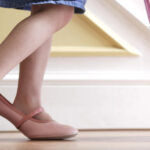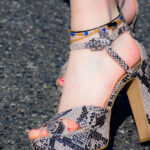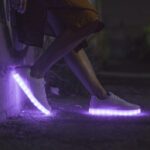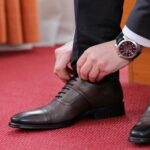If you are someone who frequently wears high heels, you know how annoying it can be when your shoes start to rub the back of your heel. It may be because your shoes are rubbing the back of your heel. In this post, we will give you Some tricks on how to stop shoes rubbing the back of your heel.
Shoes rubbing the back of your heel can be extremely painful and lead to further problems down the line. Luckily, there are some things you can do to stop this from happening. In this blog post, we will discuss what causes shoe rubbing and prevent it. Keep reading for more information!
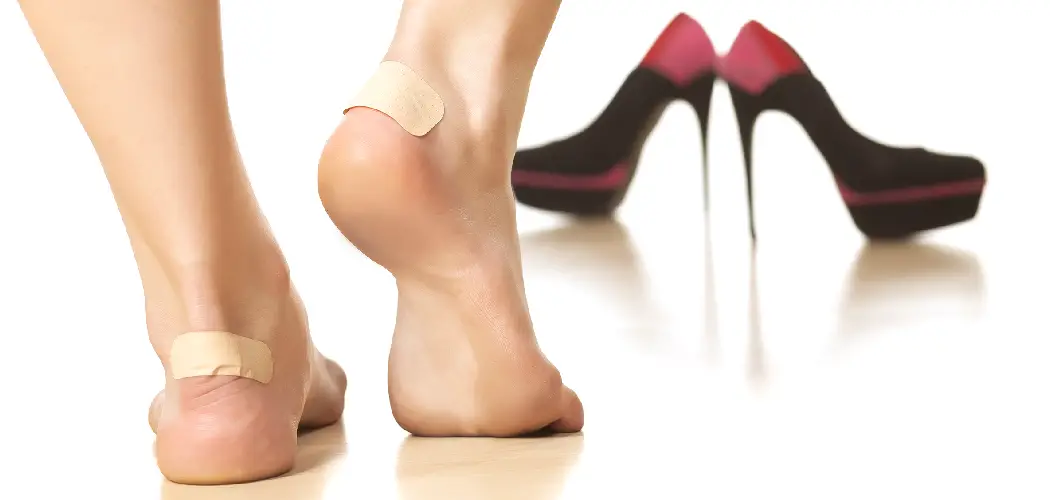
A step by Step Guide on How to Stop Shoes Rubbing the Back of Your Heel
Step 1: Proper Fit With Insoles
One way to stop shoes from rubbing the back of your heel is to make sure they fit correctly. This means that the shoes should not be too tight or too loose. It is also essential that they have the proper arch support. If they do not, consider using insoles to help fill in the gap.
Step 2: Break In the Shoes Gradually
If you cannot find a pair of shoes that fit correctly, or if the shoes you have do not have good arch support, you may need to break them in gradually. This can be done by first wearing them for short periods and then gradually increasing the amount of time you wear them.
Step 3: Use Duct Tape
If the shoes continue to rub the back of your heel even after following the tips mentioned above, you can use duct tape. First, cover the area that is being rubbed with duct tape, and this will help cushion the area and stop the rubbing.
Step 4: Use a Heel Cushion
Another way to stop shoes from rubbing the back of your heel is to use a heel cushion. This can be purchased at most drugstores or department stores. Slip it into your shoe, and it will help prevent any rubbing from occurring.
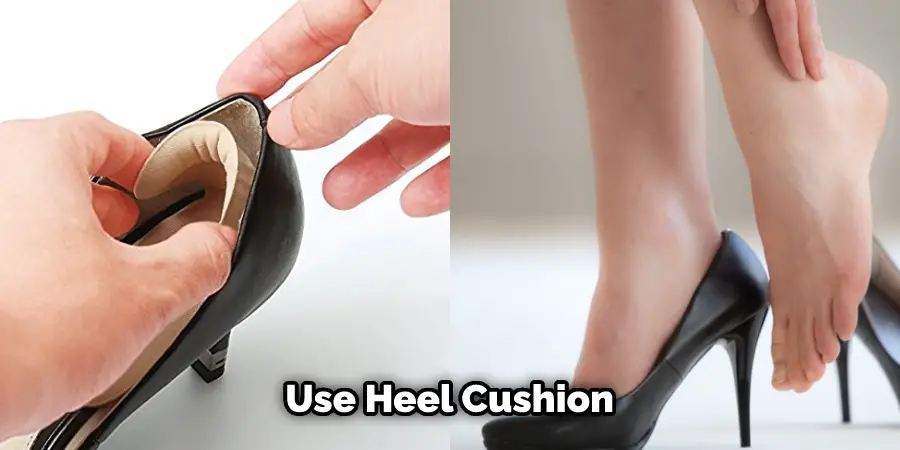
Step 5: Heel Liners
A heel liner is yet another way to stop shoes from rubbing the back of your heel. This thin pad goes in the shoe and helps protect your feet from any friction. This can be used in place of an insole or as a supplement to it, depending on how badly your shoes rub the back of your heels.
Step 6: Use Clear Nail Polish
If you experience chafing on the back of your heels, this is likely due to excess material from where the shoe was sewn together. In this case, you may need to use clear nail polish or shellac. Paint several layers onto the fabric that irritates your skin until there is no longer any exposed seam at this location.
Step 7: Moisturize Your Feet
Another way to help prevent shoes from rubbing the back of your heel is to moisturize your feet. This will help to keep the skin soft and less prone to irritation. For example, you can use a foot cream or lotion or apply a thin layer of Vaseline to your heels before you put on your shoes. It is a vital step in how to stop shoes rubbing the back of your heel.
Step 8: Use Double Socks
If you are still experiencing problems with shoes rubbing the back of your heel, try using double socks. This will help to cushion the area and stop the rubbing from occurring.
Step 9: Heel Grips
Using heel grips is another way to stop shoes from rubbing the back of your heel. These are soft rubber pad that goes over the back half of a shoe. They help prevent friction and chafing by distributing pressure across a wider area.
Step 10: Put Baby Powder in Your Shoes
If you have reached the point where nothing else seems to be working, put baby powder in your shoes. This will help keep friction at bay and prevent irritation from occurring. Sprinkle some into each shoe before putting them on, and then shake out any excess once they are on your feet.
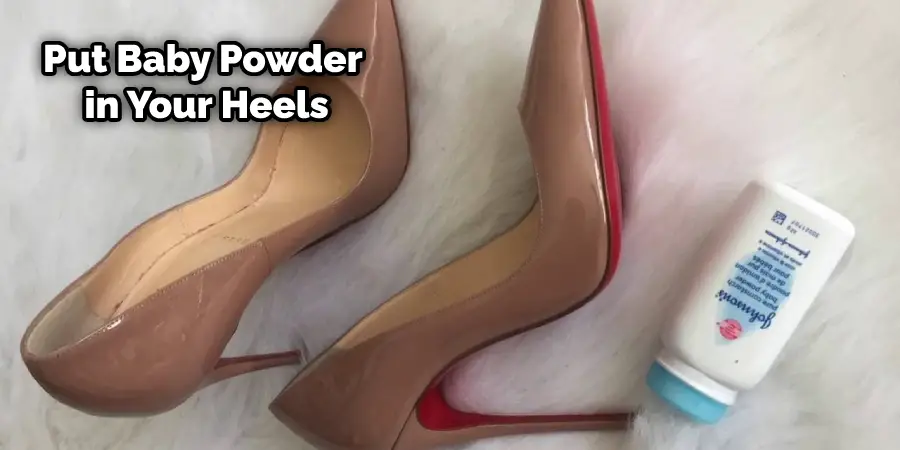
Step 11: Use Moleskin
If you are experiencing a lot of friction on the heel, you may want to try using moleskin. This is a soft, felt-like material that can be cut to fit over any areas where your skin is being irritated. It is available at most drugstores and department stores. into each
Step 12: Use Moleskin Plus
If you are experiencing a lot of friction on the heel, you may want to try using moleskin plus instead of regular moleskin. This unique material can be cut and shaped into any areas where your skin is being irritated. It consists of two layers: one made from felt and another from an adhesive substance. The bottom layer sticks to your skin while the top feels soft against it.
Step 13: Try Tennis or Golfers’ Tape
Another way to protect your skin from being irritated by shoes is to use tennis or golfers’ tape. These works are simple: wrap some around the back of each shoe’s heel before putting them on. You can find this type of tape at most drugstores or sporting goods stores.
Step 15: Use Heat
If you are having a lot of trouble with shoes rubbing the back of your heel, try using heat. This will help to soften the skin and make it less prone to irritation. You can use a heating pad, a hot water bottle, or a heating pad. Apply it to the area for several minutes before putting your shoes on.
Step 16: Get a Cobbler to Stretch Your Shoes
If you have a pair of shoes rubbing the back of your heel, it may be because they are too tight. In this case, you can take them to a cobbler and have them stretched to make them bigger. This is a quick and easy fix that can save you from having to buy a new pair of shoes. These steps will help in how to stop shoes rubbing the back of your heel.
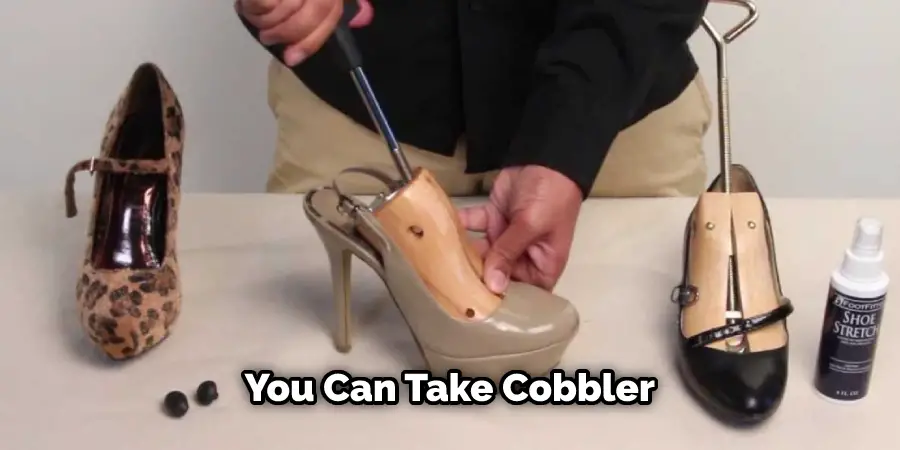
Even if you do not feel pain, heat, or redness from wearing your favorite pair of pumps all day long, there’s probably still something wrong with how they fit. Shoes that rub the back of your heel can cause long-term damage, so it’s essential to address the issue as soon as possible. These seven tips will help you stop shoes from rubbing the back of your heel so that you can wear them in comfort all day long.
Tips and Warnings
Tips
- If your shoes are still rubbing the back of your heel after trying the methods above, try using a moleskin or a heel pad to help reduce the friction.
- You can also try wearing socks with sandals to help reduce the friction.
- If you have a high arch, you may also want to try using an insert in your shoe to provide more cushioning and support.
- You can also try using a rubber cleat bandage to cover the back of your heels and prevent chafing.
- It might even help to use a cleaner such as rubbing alcohol or baby oil on the area that’s being rubbed before putting your shoes on. This could reduce or remove any excess dirt or moisture that may be causing your shoe to rub against you.
Warnings
- Do not apply rubber bandages to an open wound.
- If the rubbing and chafing continue after trying these tips, please contact a doctor immediately.
- If the rubbing only occurs on one heel, it could be a sign of plantar fasciitis.
- Make sure your shoes are not too tight or too loose. Your feet should be able to move freely inside your shoes, but they should also stay in place while you’re walking.
Why Are My New Boots Killing My Ankles?
Whether you’re a new mom enduring her first long day out with a baby, a student trudging to your 8 am class, or an avid walker/jogger, sore heels are nothing new. Heel pain is one of the most common complaints doctors hear from their patients. And if you’re like most people, the usual go-to solution for relieving heel pain is to purchase a pair of shoes that have a cushioned insole.
But what do you do when your new shoes start rubbing the back of your heel? Unfortunately, there’s no one-size-fits-all answer to this question. The best way to stop your shoes from rubbing the back of your heel is to try a variety of different remedies and see which one works best for you.
Conclusion
I hope you have gone through the article on how to stop shoes rubbing the back of your heel. One of the most common causes of pain and discomfort in heels is rubbing. If you find that your boots are irritating the back of your heel, there’s a good chance it’s due to poor fit. The best way to stop this from happening is by wearing cushioned insoles or gel pads around the base of your shoe.
These will help absorb some extra pressure caused by friction between skin and fabric and give you more padding if your shoes don’t provide enough support at their front toe area. Keep these tips handy next time you’re out shopping for new footwear!


